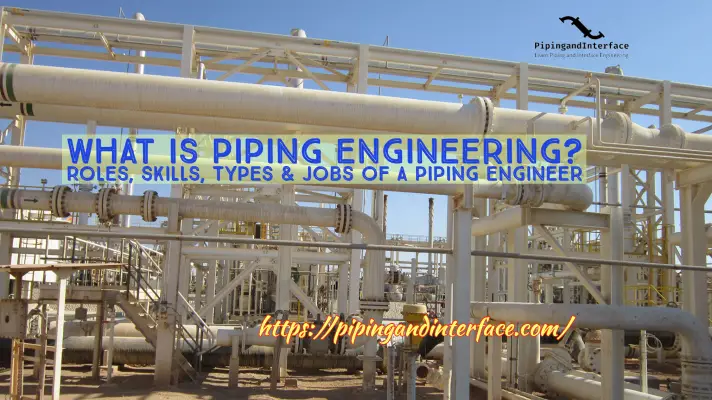In every project, engineers, contractors, and others must refer to different standards, codes, specifications, and more to do their work. Have you ever pondered the distinctions between a code and a standard? Moreover, have you contemplated how these differ significantly from specifications or regulations? In this article, we will explore each of these terms and how they are different from one another.
What Is a Code?
A code gives a set of rules that are designed as widely accepted principles endorsed for industry adherence. These guidelines are established to promote safety, quality, or other advantages. Independently, a code does not hold the status of a mandatory law but has the potential to be incorporated into legal frameworks or integrated into business contracts.
Within each code, there are stipulated minimum standards for either a piping process or the functioning of the ultimate system. These codes may encompass or refer to prevailing standards or specifications.
Is Compliance with a Code Mandatory?
On its own, adherence to a code is not obligatory, but it is often considered a best practice. The purpose of a code is to have broad applicability across an industry, facilitating its adoption and customization by local jurisdictions. Local authorities may meticulously assess a code to ensure its suitability and relevance to the area, and the process of code adoption by a jurisdiction can span several years.
Regulatory bodies enforce mandatory compliance with a code, spanning from the initial design phase through mechanical completion to the eventual handover of a plant to the operator. An example of such a code is ASME B31.3, which focuses on process piping in refineries and chemical plants.
To ensure the safety of personnel and the plant throughout construction, commissioning, and ongoing operation, the plant’s insurer may stipulate compliance with these codes as a contractual requirement.
Various organizations publish codes, standards, and specifications related to piping systems and components. Before initiating design engineering for a processing unit, it is crucial to determine which international codes, standards, and specifications apply to the project. Without these foundational documents, it becomes impossible to deliver a project that aligns with international safety standards and engineering quality, prerequisites for obtaining an operating license for the plant owner.
What Is a Standard?
A standard is often described as “a more detailed elaboration, delving into the specifics of meeting a code.” While a code outlines what needs to be done, standard guides how to accomplish it.
While a code lays out requirements for products (such as material performance levels) and processes (like the methodology of design) involved in installation, standards are advantageous for both contractors and engineers implementing them, as well as for the end user.
The how-to nature of a standard:
- A standard establishes a shared language within the industry for a specific process.
- It outlines the requirements for products, practices, methods, or operations.
- It instills confidence in the quality and safety of users.
- It reduces production costs by standardizing requirements.
Types of Standards
Standards fall into two general categories:
- Voluntary standards and
- Mandatory standards
Voluntary Standards
Voluntary standards, including industry standards or consensus standards, are established by private-sector bodies and made available for use by individuals or organizations, whether private or public. The Occupational Health and Safety Administration (OSHA) may elevate a voluntary standard to a mandatory status if it is referenced, adopted in regulations, or invoked in contracts, purchase orders, or other commercial instruments.
Mandatory Standards
Mandatory standards necessitate compliance due to government statutes or regulations, internal organizational policies, or contractual obligations. Non-compliance with the guidelines of a mandatory standard can lead to legal consequences.
What Is a Specification?
In contrast to a code or standard, which typically has broad applicability across industries and regions, specifications delineate the unique requirements of a particular company or product. These detailed documents outline specific criteria for the materials, components, or services employed in a specific application.
Occasionally, a specification may not only stipulate the materials but also dictate a standard installation or design layout for these components. Specification requirements often surpass the stipulations of codes or standards. An individual company might formulate specifications for a specific project or a common installation, specifying materials—perhaps even specifying a preferred brand for the project. Furthermore, a specification might find adoption and implementation across various projects.
What Is a Regulation?
A regulation, mandated by a government body, compels compliance by law within the industry. It may integrate codes or standards, or be independently formulated. In contrast to a code or standard, a regulation does not necessarily depend on industry consensus or a knowledgeable body to be enforced.
Examples of Codes and Standards
In the ever-evolving world of piping engineering, compliance with international standards and codes is of utmost importance. These guidelines guarantee consistency, safety, and dependability across a variety of projects globally. In this context, the most widely used international codes and standards for piping engineering are listed here.
Summary of Codes, Standards, Specifications and Regulations
The codes, standards, specifications, and regulations, whether suggested or legally obligatory, can be summarized as follows:
- Codes are widely accepted sets of rules specifying actions to be taken.
- Standards elaborate on the implementation details of codes.
- Specifications, distinct from codes or standards, detail the requisites for a specific company or product.
- Regulations, incorporating codes and standards, are government-mandated and legally binding, necessitating compliance.







